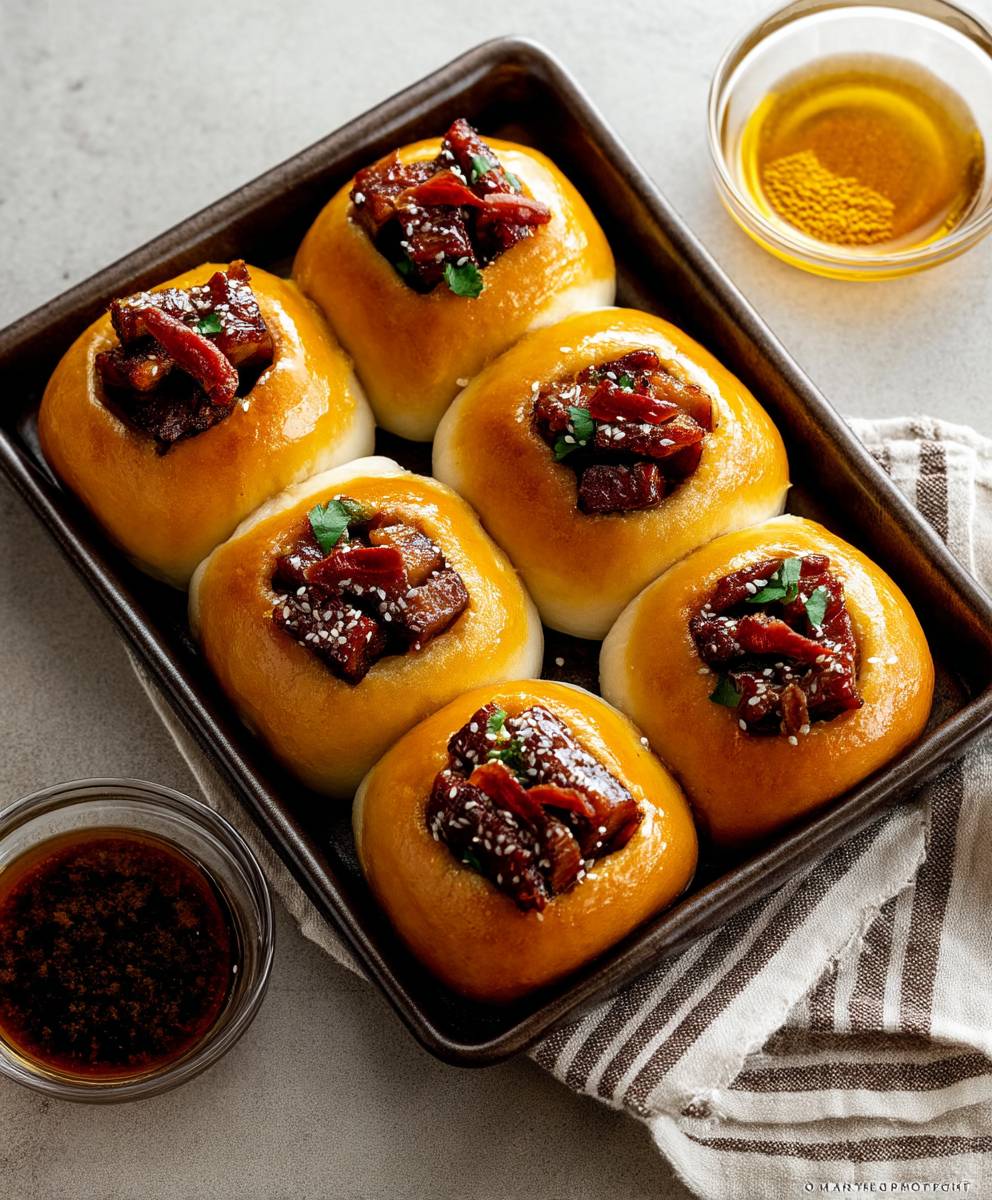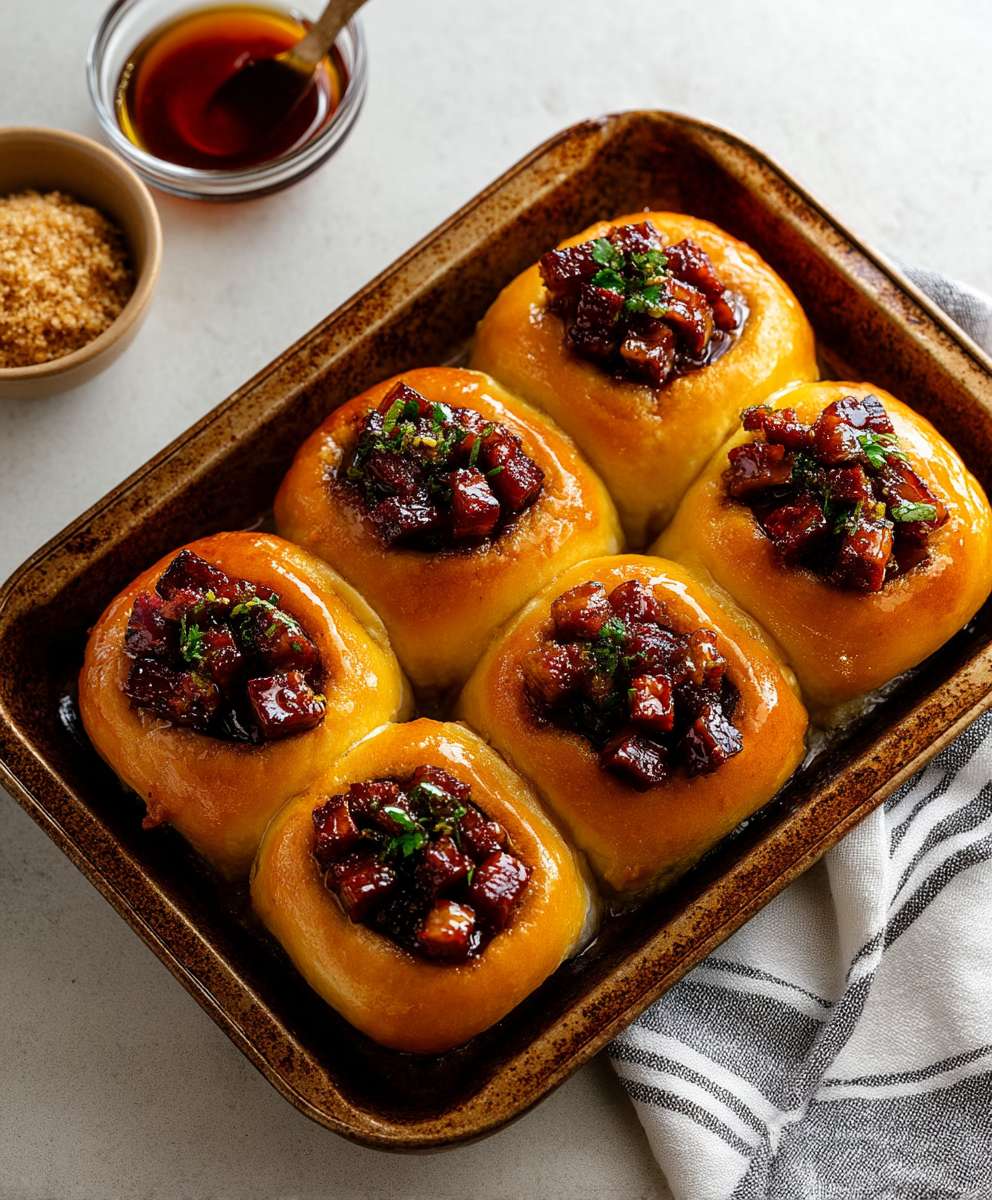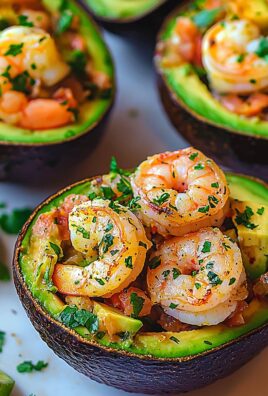Cha Siu Bao Buns, those fluffy, cloud-like pillows of sweet and savory goodness, are calling your name! Have you ever bitten into one and felt an instant wave of comfort and satisfaction? I know I have! These iconic Cantonese steamed buns, filled with succulent barbecued pork, are more than just a delicious treat; they’re a culinary journey steeped in history and tradition.
Originating in Guangdong province, Cha Siu Bao Buns have become a beloved staple in dim sum restaurants and bakeries worldwide. They represent a beautiful balance of flavors and textures the slightly sweet, yeasty dough perfectly complementing the rich, savory, and slightly sticky char siu filling. The history of these buns is intertwined with the vibrant tea house culture of Southern China, where they were originally enjoyed as a midday snack alongside a steaming pot of tea.
What makes these buns so irresistible? Perhaps it’s the melt-in-your-mouth texture, or the delightful contrast between the fluffy exterior and the intensely flavorful pork inside. Or maybe it’s the sheer convenience of having a complete and satisfying meal in a single, portable package. Whatever the reason, Cha Siu Bao Buns have captured the hearts (and stomachs!) of food lovers everywhere. Today, I’m excited to share my take on this classic recipe, so you can experience the magic of these delightful buns in your own kitchen!
Ingredients:
- For the Dough:
- 500g strong bread flour
- 100g cake flour (or all-purpose flour)
- 10g instant dry yeast
- 100g granulated sugar
- 5g baking powder
- 250ml lukewarm milk (or water)
- 50ml vegetable oil
- For the Char Siu Filling:
- 500g Char Siu (Chinese BBQ Pork), diced into small cubes
- 2 tablespoons vegetable oil
- 1 small onion, finely chopped
- 2 cloves garlic, minced
- 1 tablespoon ginger, minced
- 2 tablespoons oyster sauce
- 2 tablespoons hoisin sauce
- 1 tablespoon soy sauce
- 1 tablespoon Shaoxing wine (or dry sherry)
- 1 tablespoon cornstarch
- 1/4 cup water
- 1 tablespoon sesame oil
- 1/2 teaspoon five-spice powder
- 1/4 teaspoon white pepper
- 1 tablespoon sugar (or to taste)
- For the Glaze (Optional):
- 1 egg, beaten
- 1 tablespoon milk
Preparing the Dough:
- Combine Dry Ingredients: In a large mixing bowl, whisk together the bread flour, cake flour, instant dry yeast, sugar, and baking powder. Make sure everything is evenly distributed. This ensures the yeast activates properly and the buns rise nicely.
- Add Wet Ingredients: Gradually add the lukewarm milk (or water) to the dry ingredients, mixing with a wooden spoon or spatula until a shaggy dough forms. Then, add the vegetable oil.
- Knead the Dough: Turn the dough out onto a lightly floured surface. Knead for about 10-12 minutes, or until the dough is smooth, elastic, and no longer sticky. You can also use a stand mixer with a dough hook attachment for this step. If using a stand mixer, knead on medium speed for about 8-10 minutes. The dough should be soft and pliable.
- First Rise: Place the dough in a lightly oiled bowl, turning to coat. Cover the bowl with plastic wrap or a clean kitchen towel. Let the dough rise in a warm place for about 1-1.5 hours, or until doubled in size. This is crucial for developing the light and airy texture of the buns.
Preparing the Char Siu Filling:
- Prepare the Char Siu: If you haven’t already, dice the Char Siu into small, even cubes. The smaller the cubes, the easier it will be to fill the buns.
- Sauté Aromatics: Heat the vegetable oil in a wok or large skillet over medium heat. Add the chopped onion and sauté until softened and translucent, about 3-4 minutes. Then, add the minced garlic and ginger and sauté for another minute until fragrant. Be careful not to burn the garlic.
- Add Char Siu and Sauces: Add the diced Char Siu to the wok and stir-fry for a few minutes to heat through. Then, add the oyster sauce, hoisin sauce, soy sauce, and Shaoxing wine (or dry sherry). Stir well to combine and coat the Char Siu evenly with the sauces.
- Thicken the Sauce: In a small bowl, whisk together the cornstarch and water to create a slurry. Pour the slurry into the wok and stir constantly until the sauce thickens. This will create a glossy and flavorful coating for the Char Siu.
- Season and Finish: Stir in the sesame oil, five-spice powder, white pepper, and sugar (or to taste). Taste the filling and adjust the seasoning as needed. You may want to add more sugar for sweetness or soy sauce for saltiness. Cook for another minute, stirring constantly, until the filling is heated through and the sauce is thick and glossy. Remove from heat and let cool completely.
Assembling the Cha Siu Bao:
- Punch Down the Dough: Once the dough has doubled in size, gently punch it down to release the air. Turn the dough out onto a lightly floured surface.
- Divide the Dough: Divide the dough into 12-16 equal portions. The number of portions will depend on the size of buns you want.
- Shape the Buns: Take one portion of dough and roll it into a ball. Flatten the ball into a circle using your fingers or a rolling pin. The circle should be about 4-5 inches in diameter. The edges should be slightly thinner than the center.
- Fill the Buns: Place about 2-3 tablespoons of the cooled Char Siu filling in the center of the dough circle.
- Pleat and Seal: To pleat the bun, start by pinching the edge of the dough and folding it towards the center. Continue pinching and folding the edge of the dough, working your way around the circle, until all the edges are gathered in the center. Pinch the center tightly to seal the bun completely. Make sure there are no gaps, or the filling will leak out during steaming.
- Place on Parchment Paper: Place the assembled bun, seam-side down, on a small square of parchment paper. This will prevent the buns from sticking to the steamer basket.
- Second Rise: Arrange the filled buns on a baking sheet, leaving some space between each bun. Cover the buns loosely with plastic wrap or a clean kitchen towel. Let the buns rise for another 30-45 minutes. This second rise is important for achieving a light and fluffy texture.
Steaming the Cha Siu Bao:
- Prepare the Steamer: Fill a steamer with enough water to reach just below the steamer basket. Bring the water to a boil over medium-high heat.
- Arrange the Buns in the Steamer: Carefully place the buns, still on their parchment paper squares, in the steamer basket, leaving some space between each bun. Do not overcrowd the steamer, as this will prevent the buns from cooking evenly. You may need to steam the buns in batches.
- Steam the Buns: Cover the steamer tightly with a lid. Steam the buns for 12-15 minutes. The steaming time will depend on the size of the buns.
- Optional Glaze: While the buns are steaming, prepare the egg wash by whisking together the egg and milk. After 10 minutes of steaming, carefully open the lid and brush the tops of the buns with the egg wash. This will give the buns a shiny and golden-brown appearance. Continue steaming for the remaining 2-5 minutes.
- Cool and Serve: Once the buns are cooked, turn off the heat and let them sit in the steamer for a few minutes before removing them. This will prevent the buns from collapsing. Carefully remove the buns from the steamer and let them cool slightly on a wire rack before serving.
Tips for Perfect Cha Siu Bao:
- Use High-Quality Ingredients: The quality of your ingredients will directly impact the taste and texture of your Cha Siu Bao. Use high-quality bread flour for a light and airy dough, and flavorful Char Siu for a delicious filling.
- Don’t Overknead the Dough: Overkneading the dough can result in tough buns. Knead the dough until it is smooth and elastic, but not overly stiff.
- Proof the Dough Properly: Proper proofing is essential for achieving a light and fluffy texture. Make sure the dough doubles in size during the first rise, and that the filled buns rise for a sufficient amount of time during the second rise.
- Don’t Overfill the Buns: Overfilling the buns can make them difficult to seal and can cause the filling to leak out during steaming. Use a moderate amount of filling for each bun.
- Steam the Buns Properly: Make sure the water in the steamer is boiling vigorously before adding the buns. Steam the buns for the correct amount of time, and avoid overcrowding the steamer.
- Let the Buns Cool Slightly: Letting the buns cool slightly before serving will prevent them from being too sticky and will allow the flavors to develop.
Variations:
- Vegetarian Cha Siu Bao: Substitute the Char Siu with a vegetarian filling, such as mushrooms, tofu, or vegetables.
- Spicy Cha Siu Bao: Add a pinch of chili flakes or a dash of hot sauce to the Char Siu filling for a spicy kick.
- Different Dough Flavors: Experiment with different dough flavors by

Conclusion:
And there you have it! These Cha Siu Bao Buns are more than just a recipe; they’re an experience. From the satisfyingly sweet and savory char siu filling to the pillowy soft, slightly sweet dough, every bite is a little piece of heaven. I know, making these buns might seem a bit daunting at first glance, but trust me, the end result is absolutely worth the effort. The joy of pulling apart a warm, freshly steamed bun and savoring that delicious filling is simply unmatched.
Why is this recipe a must-try? Well, beyond the incredible flavor, it’s about the connection to a culinary tradition. It’s about learning a new skill and impressing your friends and family with your newfound baking prowess. It’s about creating something truly special from scratch. Plus, let’s be honest, store-bought buns just don’t compare to the homemade goodness of these Cha Siu Bao Buns. The texture, the aroma, the overall experience it’s all elevated when you make them yourself.
Now, let’s talk serving suggestions and variations! While these buns are absolutely divine on their own, there are plenty of ways to enjoy them. For a complete meal, serve them alongside a bowl of hot and sour soup or a simple stir-fry. They also make a fantastic addition to any dim sum spread. And if you’re feeling adventurous, why not experiment with different fillings? You could try a vegetarian version with mushrooms and tofu, or a spicy version with chili and pork. The possibilities are endless!
Consider dipping them in a little soy sauce or chili oil for an extra kick. You can also reheat them easily by steaming them again for a few minutes, ensuring they retain their soft and fluffy texture. They are also great for meal prepping! Make a big batch on the weekend and enjoy them throughout the week. Just be sure to store them properly in an airtight container in the refrigerator.
Serving Suggestions:
- Serve warm, straight from the steamer.
- Pair with hot and sour soup or a stir-fry.
- Include in a dim sum spread.
- Dip in soy sauce or chili oil.
Variations:
- Vegetarian filling with mushrooms and tofu.
- Spicy filling with chili and pork.
- Experiment with other savory fillings like chicken or beef.
I truly believe that anyone can make these buns, even if you’re not an experienced baker. Just follow the recipe carefully, take your time, and don’t be afraid to experiment. Baking is all about learning and having fun!
So, what are you waiting for? Gather your ingredients, preheat your steamer, and get ready to embark on a delicious adventure. I’m confident that you’ll love these Cha Siu Bao Buns as much as I do. And when you do try them, please, please, please share your experience with me! I’d love to hear your feedback, see your photos, and learn about any variations you come up with. Tag me in your social media posts or leave a comment below. Happy baking! I can’t wait to see your creations! Let me know if you have any questions, I’m always happy to help!
Cha Siu Bao Buns: Recipe, Tips, and Delicious Fillings
Fluffy, steamed buns filled with savory, sweet, and umami-rich Chinese BBQ pork (Char Siu). A classic dim sum treat made at home!
Ingredients
- 500g strong bread flour
- 100g cake flour (or all-purpose flour)
- 10g instant dry yeast
- 100g granulated sugar
- 5g baking powder
- 250ml lukewarm milk (or water)
- 50ml vegetable oil
- 500g Char Siu (Chinese BBQ Pork), diced into small cubes
- 2 tablespoons vegetable oil
- 1 small onion, finely chopped
- 2 cloves garlic, minced
- 1 tablespoon ginger, minced
- 2 tablespoons oyster sauce
- 2 tablespoons hoisin sauce
- 1 tablespoon soy sauce
- 1 tablespoon Shaoxing wine (or dry sherry)
- 1 tablespoon cornstarch
- 1/4 cup water
- 1 tablespoon sesame oil
- 1/2 teaspoon five-spice powder
- 1/4 teaspoon white pepper
- 1 tablespoon sugar (or to taste)
- 1 egg, beaten
- 1 tablespoon milk
Instructions
- Combine Dry Ingredients: In a large mixing bowl, whisk together the bread flour, cake flour, instant dry yeast, sugar, and baking powder. Make sure everything is evenly distributed.
- Add Wet Ingredients: Gradually add the lukewarm milk (or water) to the dry ingredients, mixing with a wooden spoon or spatula until a shaggy dough forms. Then, add the vegetable oil.
- Knead the Dough: Turn the dough out onto a lightly floured surface. Knead for about 10-12 minutes, or until the dough is smooth, elastic, and no longer sticky. You can also use a stand mixer with a dough hook attachment for this step. If using a stand mixer, knead on medium speed for about 8-10 minutes. The dough should be soft and pliable.
- First Rise: Place the dough in a lightly oiled bowl, turning to coat. Cover the bowl with plastic wrap or a clean kitchen towel. Let the dough rise in a warm place for about 1-1.5 hours, or until doubled in size.
- Prepare the Char Siu: If you haven’t already, dice the Char Siu into small, even cubes.
- Sauté Aromatics: Heat the vegetable oil in a wok or large skillet over medium heat. Add the chopped onion and sauté until softened and translucent, about 3-4 minutes. Then, add the minced garlic and ginger and sauté for another minute until fragrant.
- Add Char Siu and Sauces: Add the diced Char Siu to the wok and stir-fry for a few minutes to heat through. Then, add the oyster sauce, hoisin sauce, soy sauce, and Shaoxing wine (or dry sherry). Stir well to combine and coat the Char Siu evenly with the sauces.
- Thicken the Sauce: In a small bowl, whisk together the cornstarch and water to create a slurry. Pour the slurry into the wok and stir constantly until the sauce thickens.
- Season and Finish: Stir in the sesame oil, five-spice powder, white pepper, and sugar (or to taste). Taste the filling and adjust the seasoning as needed. Cook for another minute, stirring constantly, until the filling is heated through and the sauce is thick and glossy. Remove from heat and let cool completely.
- Punch Down the Dough: Once the dough has doubled in size, gently punch it down to release the air. Turn the dough out onto a lightly floured surface.
- Divide the Dough: Divide the dough into 12-16 equal portions.
- Shape the Buns: Take one portion of dough and roll it into a ball. Flatten the ball into a circle using your fingers or a rolling pin. The circle should be about 4-5 inches in diameter. The edges should be slightly thinner than the center.
- Fill the Buns: Place about 2-3 tablespoons of the cooled Char Siu filling in the center of the dough circle.
- Pleat and Seal: To pleat the bun, start by pinching the edge of the dough and folding it towards the center. Continue pinching and folding the edge of the dough, working your way around the circle, until all the edges are gathered in the center. Pinch the center tightly to seal the bun completely.
- Place on Parchment Paper: Place the assembled bun, seam-side down, on a small square of parchment paper.
- Second Rise: Arrange the filled buns on a baking sheet, leaving some space between each bun. Cover the buns loosely with plastic wrap or a clean kitchen towel. Let the buns rise for another 30-45 minutes.
- Prepare the Steamer: Fill a steamer with enough water to reach just below the steamer basket. Bring the water to a boil over medium-high heat.
- Arrange the Buns in the Steamer: Carefully place the buns, still on their parchment paper squares, in the steamer basket, leaving some space between each bun. Do not overcrowd the steamer, as this will prevent the buns from cooking evenly. You may need to steam the buns in batches.
- Steam the Buns: Cover the steamer tightly with a lid. Steam the buns for 12-15 minutes.
- Optional Glaze: While the buns are steaming, prepare the egg wash by whisking together the egg and milk. After 10 minutes of steaming, carefully open the lid and brush the tops of the buns with the egg wash. Continue steaming for the remaining 2-5 minutes.
- Cool and Serve: Once the buns are cooked, turn off the heat and let them sit in the steamer for a few minutes before removing them. Carefully remove the buns from the steamer and let them cool slightly on a wire rack before serving.
Notes
- Use High-Quality Ingredients: The quality of your ingredients will directly impact the taste and texture of your Cha Siu Bao. Use high-quality bread flour for a light and airy dough, and flavorful Char Siu for a delicious filling.
- Don’t Overknead the Dough: Overkneading the dough can result in tough buns. Knead the dough until it is smooth and elastic, but not overly stiff.
- Proof the Dough Properly: Proper proofing is essential for achieving a light and fluffy texture. Make sure the dough doubles in size during the first rise, and that the filled buns rise for a sufficient amount of time during the second rise.
- Don’t Overfill the Buns: Overfilling the buns can make them difficult to seal and can cause the filling to leak out during steaming. Use a moderate amount of filling for each bun.
- Steam the Buns Properly: Make sure the water in the steamer is boiling vigorously before adding the buns. Steam the buns for the correct amount of time, and avoid overcrowding the steamer.
- Let the Buns Cool Slightly: Letting the buns cool slightly before serving will prevent them from being too sticky and will allow the flavors to develop.
- Vegetarian Cha Siu Bao: Substitute the Char Siu with a vegetarian filling, such as mushrooms, tofu, or vegetables.
- Spicy Cha Siu Bao: Add a pinch of chili flakes or a dash of hot sauce to the Char Siu filling for a spicy kick.





Leave a Comment